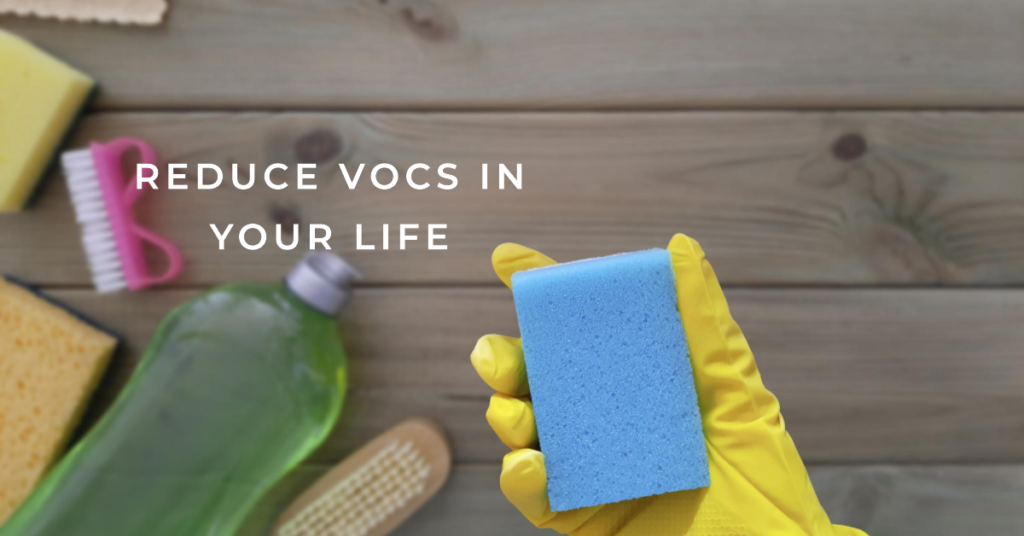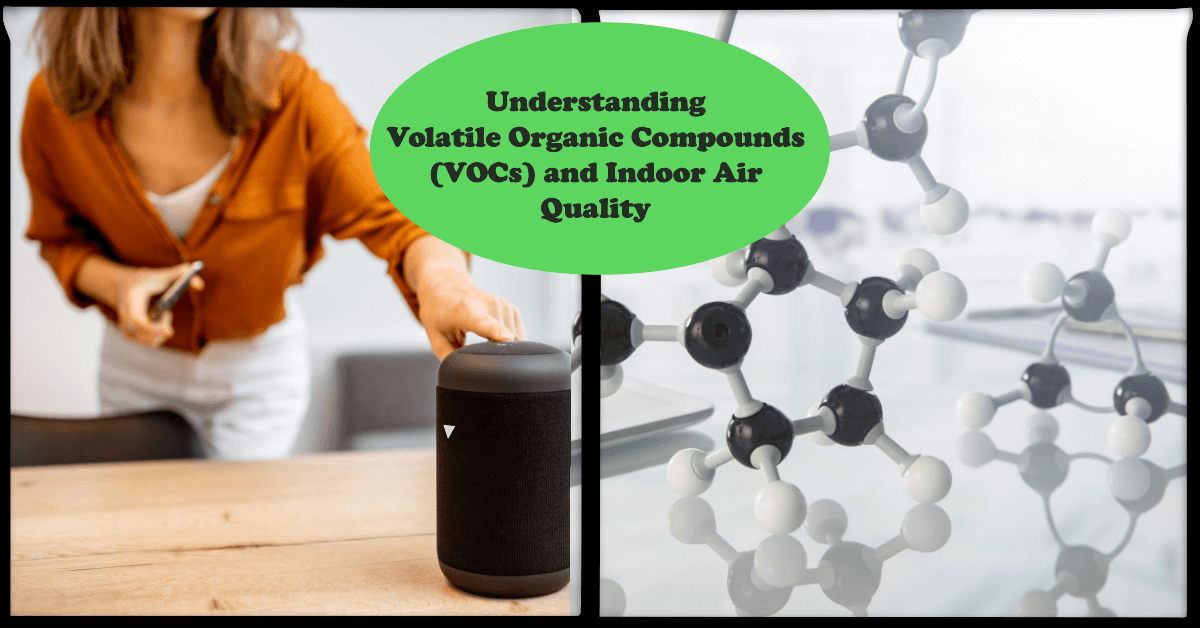In the indoor air quality, understanding the impact of Volatile Organic Compounds (VOCs) is very important. VOCs encompass a diverse range of airborne pollutants originating from various household products, furnishings, and building materials. In this comprehensive guide, we delve into the intricate relationship between VOCs and indoor air quality, unraveling the sources, potential health implications, and effective strategies for mitigating these compounds. By providing a thorough exploration of VOCs, this article aims to empower readers with the knowledge needed to create healthier indoor environments.
The first step in navigating the landscape of indoor air quality is comprehending the nature of Volatile Organic Compounds. These compounds, emitted as gases from certain solids or liquids, include a myriad of chemicals that can have both short-term and long-term effects on human health. As we embark on this journey, we will elucidate the origins of VOCs, ranging from commonplace household items like paints and cleaning agents to less obvious sources such as furniture and electronics. By grasping the diverse array of VOC-emitting sources, readers can gain insight into the complexity of managing indoor air quality effectively.
Beyond the sources, the second dimension of our exploration addresses the potential consequences of prolonged exposure to VOCs on human health. The comprehensive guide delves into the short-term symptoms, such as eye and respiratory irritation, as well as the potential long-term risks, including damage to the liver, kidneys, and the central nervous system. By unraveling the intricate relationship between VOC exposure and health, readers can make informed decisions about minimizing risks and fostering healthier living environments. This guide not only serves as an informational resource but also as a proactive tool for individuals seeking to enhance the quality of the air they breathe daily.
What Are VOCs?
voc meaning Volatile Organic Compounds, are a group of chemicals that can easily evaporate into the air at room temperature. They are called “organic” because they contain carbon atoms in their molecular structure. They can be found in many everyday products, both natural and man-made. These compounds can vaporize and become airborne, potentially leading to indoor air pollution.
Common Sources of VOCs
Understanding where VOCs originate is essential for managing indoor air quality. Here are some common sources of VOCs:
- Household Cleaning Products: Many household cleaners, including sprays, detergents and disinfectants, contain VOCs.
- Paints and Solvents: Paints, varnishes and paint thinners often release VOCs into the air during and after application. VOC paint is one of the primary sources, as many paints contain these compounds.
- Furniture and Flooring: New furniture and flooring materials can emit VOCs as they off-gas over time.
- Personal Care Products: Items like perfumes, deodorants and hair sprays may contain VOCs.
- Building Materials: Plywood, particleboard and other construction materials can be sources of VOC emissions.
Health Effects of VOCs
Exposure to VOCs can have various health effects. Breathing in high levels of these can lead to symptoms such as headaches, dizziness and irritation of the eyes and throat. Long-term exposure to them is associated with more serious health problems. Understanding the health effects of VOCs is essential for protecting yourself and your family from potential harm.
- Respiratory Issues: They can irritate the respiratory system, leading to symptoms like coughing, sneezing and throat irritation.
- Headaches and Dizziness: Prolonged exposure to these may cause headaches, dizziness and even nausea in some individuals.
- Allergies and Asthma: They can worsen allergies and trigger asthma attacks in people who are sensitive to them.
- Long-Term Health Risks: Some VOCs are classified as carcinogens, which means they can potentially increase the risk of cancer with prolonged exposure.

Reducing VOC Exposure
Now that you understand the potential risks associated with VOCs, it’s crucial to take steps to reduce your exposure and improve indoor air quality. To reduce your exposure, consider using low-VOC products. These products contain fewer harmful chemicals and can help lower your voc air quality. Choosing low-VOC paints and other materials can make a significant difference in the air you breathe indoors. When you opt for low VOC paints, you’re taking a step towards creating a healthier living environment with low emitting paints.
- Choose Low-VOC Products: When purchasing household items like paint, furniture or cleaning products, look for those labeled as low-VOC or VOC-free.
- Proper Ventilation: Ensure good ventilation in your home by opening windows and using exhaust fans, especially when using products that emit them.
- Air Purifiers: Consider using air purifiers with activated carbon filters to help remove VOCs from the air.
- Limit Indoor Smoking: If you or someone in your household smokes, consider doing it outdoors to prevent indoor air contamination.
- Regular Maintenance: Maintain your HVAC system and replace air filters regularly to help reduce indoor air pollution.
Common Types of VOCs
VOCs come in various forms and knowing the specific types can help you better address indoor air quality concerns. There are many different types of VOCs and they can come from various sources. Some voc chemicals are found in cleaning supplies, while others are present in the fumes from vehicles.
Being aware of these voc substances and their potential sources is essential for maintaining good indoor air quality. Voc organic compounds can be harmful, so knowing what to look for and where they might be found is crucial for your well-being.
Here are some common types of VOCs or voc examples i.e. volatile organic compounds examples:
| VOC Compound | Common Sources |
|---|---|
| Formaldehyde | It can be found in Pressed wood products, insulation, glues, adhesives |
| Benzene | Benzene is found in Gasoline, tobacco smoke, plastics, synthetic fibers. It can have harmful effects on the body, particularly when exposure is prolonged. |
| Toluene | Paints, paint thinners, adhesives, inks |
| Xylene | Paints, varnishes, lacquers, cleaning agents |
| Acetone | Nail polish removers, some household cleaners |
| Ethanol | Alcoholic beverages, cleaning products |
| Methanol | Chemical production, windshield washer fluid |
| Acetaldehyde | Cigarette smoke, cleaning products |
| Styrene | Plastics, rubber, insulation materials |
| Chloroform | Water chlorination byproduct, some products |
Identifying VOC Sources
Identifying the sources of VOCs in your home is crucial for effective management. Identifying VOC sources is the first step in reducing your exposure to these compounds. Vocs in air can come from a variety of places, including household products and building materials.
Knowing how to identify VOC sources and taking steps to reduce them can lead to better indoor air quality and a healthier living environment. Here are some steps to help you pinpoint potential VOC sources:
- Read Labels: When you purchase products, read the labels for information on VOC content. Look for low-VOC or VOC-free alternatives.
- Check Building Materials: If you’ve recently done home renovations or installed new materials, inquire about the VOC emissions associated with those materials.
- Consider Lifestyle Habits: Be mindful of your lifestyle habits. Smoking indoors, using certain personal care products or storing chemicals in poorly ventilated areas can contribute to indoor VOC levels.
- Home Inspection: Consider hiring a professional to conduct a home inspection for indoor air quality.

Monitoring VOC Levels
Monitoring VOC levels in your home can help you stay proactive about air quality.
Monitoring VOC levels in your indoor environment is essential for ensuring good air quality. You can use devices that measure tvoc air quality to get an idea of the concentration of these compounds in your surroundings. Understanding tvoc examples and what they mean for your health can help you make informed decisions about how to improve your indoor air.
Devices that measure tvoc formaldehyde levels can be particularly useful in detecting potential issues. There are various methods and devices available for this purpose:
- Air Quality Monitors: These devices can detect and measure VOC concentrations in your indoor environment. Some even provide real-time data and alerts when levels exceed safe limits.
- Home Testing Kits: DIY home testing kits are available for assessing indoor air quality. These kits typically include sample collection materials and instructions for analysis.
- Professional Testing: For a comprehensive assessment, consider hiring a professional indoor air quality testing service. They can provide detailed reports on VOC levels and suggest remedies.
Managing Volatile Organic Compounds
Once you’ve identified VOC sources and monitored levels, it’s time to take action to manage them effectively:
- Ventilation: Improve ventilation in your home by opening windows and using exhaust fans. This helps dilute and remove them from indoor air.
- Use Air Purifiers: Air purifiers with activated carbon filters are effective at capturing VOCs. Place them in rooms where you spend the most time.
- Seal Products: If you have products that emit VOCs, like paints and adhesives, ensure their containers are tightly sealed when not in use.
- Consider Natural Alternatives: Explore natural and low-VOC alternatives for household products whenever possible.
Managing VOCs involves taking steps to reduce their presence in your home. You can start by using voc off gassing products and materials. These are designed to release fewer vocs in air, helping to improve your indoor air quality. Additionally, voc reducing paint and other products are available to help you minimize your exposure to these harmful compounds.
Regular Ventilation
One of the simplest yet most effective ways to reduce indoor VOC levels is through regular ventilation. Opening windows and doors to allow fresh outdoor air to circulate can help dilute and remove VOCs from your living spaces. When using products that emit VOCs, such as paints or cleaning agents, ensure adequate ventilation during and after use. Additionally, using exhaust fans in kitchens and bathrooms can aid in expelling indoor pollutants.
Implementing regular ventilation practices is one of the most effective ways to reduce voc air pollution in your home. Opening windows and using exhaust fans can help remove voc air and improve indoor air quality. voc air meaning air which contains VOC’s. Proper ventilation and VOCs management can go a long way in ensuring the air you breathe is clean and safe. Make it a habit to practice regular ventilation tips to create a healthier living space.
Choose Low-VOC Products
When shopping for household items, prioritize products labeled as low-VOC or VOC-free. Many manufacturers now offer environmentally friendly alternatives that release fewer harmful chemicals into the air. From paints and adhesives to furniture and flooring, opting for these products can significantly reduce VOC emissions in your home. Always read product labels and ask for guidance from sales professionals when making choices.
Opting for low-VOC products when making choices for your home can significantly reduce your exposure to harmful compounds. These low-VOC product options are designed to have minimal impact on indoor air quality. Whether you’re selecting low-VOC items for building materials or everyday household products, being mindful of their low-VOC alternatives can make a big difference.
Regular Maintenance
Regular maintenance of your indoor environment can go a long way in minimizing VOC exposure. Ensure that your HVAC system is well-maintained and that filters are replaced as recommended by the manufacturer. A clean and well-maintained HVAC system can help filter out airborne particles, including VOCs. Similarly, keep an eye on any water leaks or moisture issues, as these can promote the growth of mold, which can emit VOCs.
Maintaining low-VOC products is essential for preserving their low impact on indoor air quality. By staying on top of the upkeep of low-VOC materials and practicing low-VOC maintenance, you ensure that these products continue to contribute to a healthier living environment. Regular maintenance is key to maximizing the benefits of low-VOC choices.
Air Purifiers
Investing in high-quality air purifiers equipped with activated carbon filters can be an excellent addition to your indoor air quality toolkit. These filters are specifically designed to capture VOCs and other indoor air pollutants. Place air purifiers in commonly used areas of your home to ensure maximum efficiency. Be sure to follow the manufacturer’s instructions for filter replacement and maintenance.
Air purifiers are devices that can help remove vocs in air and improve indoor air quality. When selecting air purifiers for VOCs, consider models designed to effectively capture and eliminate these compounds. Using air purifiers for VOCs can be a valuable addition to your efforts in creating a cleaner and healthier indoor environment.

Educate Yourself
Finally, the more you educate yourself about VOCs and indoor air quality, the better equipped you’ll be to make informed decisions. Stay updated on the latest research and guidelines related to indoor air quality. Consider attending workshops or seminars on environmental health. By staying informed, you can continue to make positive changes in your living environment.
Educating yourself about VOCs and their impact on indoor air quality is the first step towards making informed decisions. Understanding voc education materials and resources can empower you to take control of your living environment. By learning about VOCs, you become better equipped to protect yourself and your family from potential health risks associated with these compounds.
In conclusion, understanding Volatile Organic Compounds and their impact on indoor air quality is the first step towards creating a healthier home. By identifying sources, monitoring levels and implementing practical strategies like ventilation, choosing low-VOC products, regular maintenance and using air purifiers, you can significantly improve the air you and your family breathe. Remember, a proactive approach to indoor air quality can lead to a happier and healthier living space for all.
Frequently Asked Questions
What is an example of a VOC?
An example of a VOC (Volatile Organic Compound) is formaldehyde. You can find it in things like plywood used in furniture and cabinets, as well as in the glues that hold various materials together. It’s also used in some types of insulation.
Why are VOCs harmful?
VOCs can be harmful because when we breathe them in, they can irritate our lungs and cause health problems. For example, they might give us headaches, make us feel dizzy or even lead to more serious issues if we’re exposed to them for a long time.
What is the most common VOC?
One of the most common VOCs is formaldehyde. It’s used in many building materials, like the wood in our homes and the adhesives that hold them together. You can also find it in certain household products like glues and adhesives.
What is an example of a volatile organic solvent?
Paint thinner is a good example of a volatile organic solvent. It’s a liquid used to thin paint or clean paintbrushes and it can release fumes that may not be safe to breathe in large amounts.
What are 3 sources of VOCs?
Three common sources of VOCs in our daily lives are household cleaning products, paints and new furniture. These products often contain chemicals that can turn into VOCs and get into the air when we use them.
What are the applications for VOC?
VOCs are used in many things to make them work better. They’re often added to products like paints, adhesives and cleaning products to help them dry faster or stick better. In industries, VOCs are used in various processes, including making plastics and chemicals.
What causes VOC in the air?
VOCs get into the air from products and materials that contain them. Even when these products are just sitting around at room temperature, some of the chemicals they contain can evaporate and become VOCs in the air we breathe.
What is the most toxic VOC?
Some VOCs can be very toxic, like benzene. It’s important to know that different VOCs have different levels of toxicity and some can be more harmful than others.
What VOC level is safe?
The safe level of VOCs depends on the specific chemical and how long you’re exposed to it. In general, it’s best to keep VOC levels as low as possible in your home and workspaces to protect your health.
What is VOC in drinking water?
Sometimes, VOCs can be found in drinking water. They can get there from things like industrial pollution, chemicals that seep into the ground or even from water treatment processes. It’s important to make sure your drinking water is tested and treated to remove harmful VOCs.
Which products contain VOC?
Many everyday products contain VOCs. Some examples include paints, varnishes, cleaning agents, air fresheners, perfumes and even certain types of shampoo and deodorant.
What is VOC in an air purifier?
In an air purifier, VOCs refer to the harmful chemicals in the air that the purifier tries to remove. Air purifiers often use filters with activated carbon to capture VOCs and make the air cleaner and safer to breathe.
Does AC remove VOC?
Air conditioning (AC) can help remove some VOCs by circulating and filtering the air. However, AC systems may not be as effective as dedicated air purifiers in removing VOCs.
How do you remove VOC from the air?
To remove VOCs from the air, you can use air purifiers with activated carbon filters. These filters can trap VOCs and prevent them from being inhaled. It’s also a good idea to increase ventilation by opening windows and doors to let fresh outdoor air in. Lastly, choosing products with lower VOC content can reduce their presence in your home.
How do I remove VOC from my home air?
To remove VOCs from your home air, you can use air purifiers, open windows and doors for fresh air circulation and choose products that are labeled as low-VOC or VOC-free when shopping for items like paint, cleaning products and furniture. These steps can help create a healthier indoor environment.
DheerajSonwane is a dedicated writer with expertise in air purification technologies. He focuses on providing well-researched content to help readers improve indoor air quality in homes and businesses. As the lead writer at AirPurifierMaster.com, Dheeraj offers practical advice his insightful reviews guide individuals in choosing the best air purifiers for their needs.


6 thoughts on “Volatile Organic Compounds (VOCs) and Indoor Air Quality: A Comprehensive Guide”